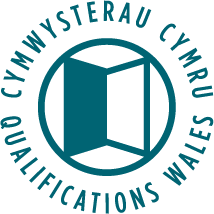Understand and Enable Interaction and Communication with Individuals Who Have Dementia
- Unit ID:
- CCY335
- Unit Code:
- PT23CY125
- Level:
- Three
- Credit Value:
- 4
- Sector:
- 1.3
- LDCS:
- PT2
- GLH:
- 30
- Last registration date:
- 31/10/2029
- Lower age restriction:
- 16

This unit forms part of one or more qualifications.
Agored Cymru Level 3 Diploma in Rehabilitation Support (Wales)
Agored Cymru Level 4 Diploma for Therapy Assistant Practitioners
Agored Cymru Level 4 Diploma for Therapy Assistant Practitioners
Purpose and Aim
This unit provides the opportunity for the learner to develop and implement the qualities of an effective relationship with individuals with dementia. This is based on the use of positive interactions and communication skills.
Learning OutcomesThe learner will
|
Assessment CriteriaThe learner can
|
||||||||||||
|---|---|---|---|---|---|---|---|---|---|---|---|---|---|
|
|
||||||||||||
|
|
||||||||||||
|
|
||||||||||||
|
|
Assessment Methods:
There are no prescribed assessment methods for this unit. Assessments used should be fit for purpose for the unit and learners, and generate evidence of achievement for all the assessment criteria.
Assessment Information:
Carers, e.g.
- partner
- family
- friends
- neighbours.
- care worker
- colleague
- manager
- Social Worker
- Occupational Therapist
- GP
- Speech and Language Therapist
- Physiotherapist
- Pharmacist
- Nurse
- Psychologist
- Admiral Nurses
- Independent Mental Capacity Advocate
- Community Psychiatric Nurse
- Dementia Care Advisors
- advocate
- support groups.
- opportunities to meet with family and friends
- able to talk about early life, past career, good memories
- engagement with familiar activities i.e. attendance at church, clubs, playing golf, favourite walks
- engagement with activities, e.g. reminiscence, listening to favourite music,
- continuing social routines, e.g. going to the hairdressers, out for coffee etc.
This approach tries to place the individual in the here and now, reminding them of the day, place, time and situation they are in.
Validation approach
Using non-judgmental acceptance and empathy to show the individual that their expressed feelings are valid. Focussing on the feelings rather than the content of speech.
If not specifically stated in the assessment information, a plural statement in any assessment criterion means a minimum of two.
Other Mappings:
Mapping to National Occupational Standards (NOS) and the Knowledge and Skills Framework (KSF) for the NHS.
SCDHSC0031 Promote effective communication, SCDHSC0024 Support the safeguarding of individuals, SCDHSC0035 Promote the safeguarding of individuals, SCDHSC0045 Lead practice that promotes the safeguarding of individuals
SCDHSC0031 Promote effective communication, SCDHSC0024 Support the safeguarding of individuals, SCDHSC0035 Promote the safeguarding of individuals, SCDHSC0045 Lead practice that promotes the safeguarding of individuals
Assessor Requirements:
There is no information regarding specific assessor requirements for this unit. Centres should select assessors who are trained in assessment, and who have subject specific competence to assess at this level.